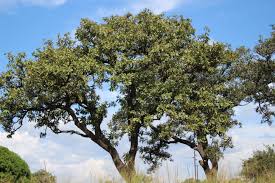
Shea butter
Share

Shea butter from the shea tree Vitellaria paradoxa (formerly Butyrospermum parkii) is one of my favourite ingredients. If you've looked at the Oh Goodness range you'll notice that it appears in most products, and I simply love it in soap as it produces a lovely creamy bar. Sticky and faintly scented, it's lovely in its raw form (if you don't mind the sticky). It's a humectant, meaning it helps keep skin moist, and packs real power in its moisturising and skin nourishing properties.
I used to get a type of dermatitis on my hands with some regularity. I'm a mother of three, I'm always wiping something or cleaning up a spill or cooking and now making skincare and my hands get wet. Like, a lot. I used to clean using commercial cleaners (before I started making my own) and never wore gloves...and I have suffered infections on my hands due to dermatitis becoming infected. But since I've been using shea based products (and natural cleaners!) the dry spots are few and far between and I feel like my skin is much stronger and healthier, despite the beating it takes from my lifestyle.

I started noticing how amazing shea butter is when I began making natural deodorant. I would realise that my hands were greatly improved when I'd make a batch and get a little on my hand while measuring it out. Rub it in and it's sticky, but it absorbs rapidly and provides a temporary waterproof coating. Give it time and the next time you look at that skin it's different. In my case, the flakiness is reduced and the skin is healthier and plumper. It's actually a little like those magic marker boards that kids use...the ones that you pull the wiper across and it erases what you've done. Actually that fast. Incredible.
Shea butter is a fat extracted from the nut of the african shea tree (Vitellaria paradoxa). It melts at body temperature, which is why it's so good for skincare preparations though in Africa it's also eaten. It's used in a variety of different ways from cooking oil to candle making to cosmetics and ointments. It's choc full of fatty acids : oleic, stearic, linoleic, palmitic, linolenic and arachidic acids, all of which have awesome moisturising properties for skin.

Shea can be a tricky beast; temperature is important when working with natural butters as all those amazing fatty acids have a corresponding melt and reset temperature, so how you deal with it matters. Handle it incorrectly and you can be left with a grainy product, meaning a smooth, oil based cream can suddenly feel like it contains grains of sand. Not ideal, obviously. I learnt this the hard way, when a batch of cream I was working on (and a different batch of shea to the prototype) suddenly started turning on me and producing something closer to an exfoliant. Luckily, it's also easily fixed once you know how - heating it above the melt point of the various fatty acids and then cooling rapidly before the crystals have time to form will ensure smoothness.
I'm always interested in where and how ingredients are sourced, and the conditions of workers involved. For the most part, shea is grown organically and originates in West Africa where it is harvested by rural women, to whom it provides economic sustenance. The west's increased interest in shea butter as a cosmetic ingredient over the last decade or so has seen huge growth in the industry. With the help of various local union groups there have been direct and positive returns for workers.
So that's shea, in a nutshell (pardon the pun).. I love it, and will continue to work with it for the benefit of skins everywhere.
Check out our new Intense moisturiser, which has a shea butter base:
https://ohgoodness.nz/collections/skincare/products/intense-moisturiser
For more information, check out this excellent page
https://www.saje.com/ingredient-garden-shea.html
For more on the West African shea butter trade
https://en.wikipedia.org/wiki/Shea_nut_and_butter_production_in_Burkina_Faso
#ohgoodnessthatsbetter
